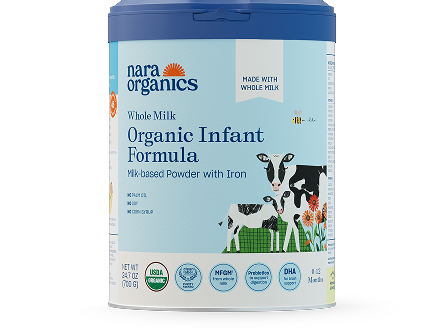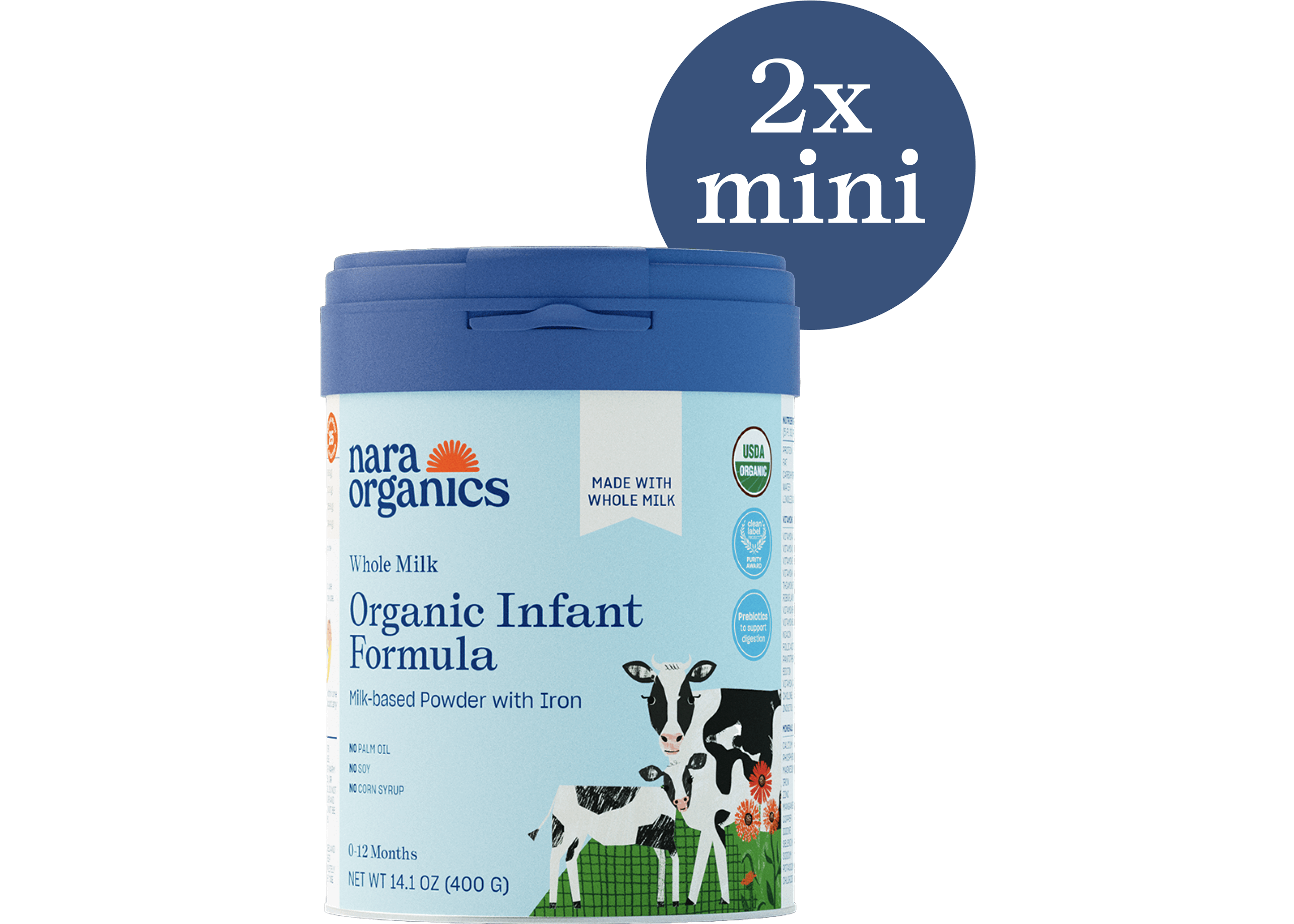Wait, aren’t all baby formulas made with whole milk? (No!) Not all baby formulas are made with whole milk. Many formulas use skim or nonfat milk instead. So, how do you choose between those that are made with whole milk or those that contain skim or nonfat milk? Why does organic milk fat matter? More and more whole milk formulas are available in the U.S., and families have questions. Keep reading for more info about the importance of organic whole milk.
Whole milk vs. skim milk in baby formula
First, let’s look at the big picture. Most infant formulas in the U.S. are made with skim (nonfat) milk and use vegetable oils as their only fat source. The composition of a few baby formulas are based on whole milk, which means they’re able to keep the natural milk fat and use less vegetable oils.
Infant formulas have been using skim milk as an ingredient for decades, and it’s proven to be safe and nutritious for babies. It is an excellent source of protein, calcium, and other essential nutrients. What skim milk doesn’t provide is natural milk fat, which is why those formulas must use vegetable oils as their sole fat source to provide the necessary fatty acids and calories for growing babies.
Whole milk, which provides protein, calcium, and other nutrients, also provides milk fat that helps bring the fat composition of whole milk formula closer to breastmilk.
Nara Organics uses the most whole milk fat of any U.S. formula.* When making our formula, we started with organic whole milk and built from there.
*Nara obtained a new FDA clearance to be able to use the highest amount of whole milk (and therefore milk fat) in U.S. infant formula.
The power of MFGM
When you talk about whole milk, you have to talk about fat — and MFGM.
Organic whole milk is filled with naturally occurring, nutritious fats that support your baby’s growth and brain development. Fat globules in whole milk are surrounded by a layered membrane. This membrane, called the milk fat globule membrane (MFGM) is complex and consists of a lot of different components that may play a role in infant health outcomes. Naturally occurring MFGM is found in breastmilk and whole cows' milk — but not in skim milk or vegetable oils.
Researchers are still exploring the role of the various components in MFGM that are responsible for positive outcomes in babies, including neurodevelopment benefits, immune system, and gut health benefits just to name a few.
Ongoing research shows that MFGM may help support cognitive development, the immune system as well as nurture gut health.1,2,3,4,5,6
Organic vs conventional milk
Infant formulas can be based on either conventional or organic milk. At Nara Organics, we’re strongly committed to organic whole milk. Organic farming practices are beneficial for the land, and we think they make for happier cows! Research also suggests that organic milk may have higher levels of omega-3 fatty acids and a preferable omega-6:omega-3 ratio.7
The USDA regulates organic farming and dairy. Organic whole milk comes from cows fed only organic (non-GMO) food, and vitamins and mineral supplements to support their health. These cows must have access to graze on organic pasture (where they eat grass and other forage which have not had any prohibited pesticides applied to it) for at least 120 days of the year and not be treated with growth hormones or antibiotics.8 We are proud that all the dairy farms we work with maintain the highest standards of animal welfare. Our Organic Whole Milk also meets EU milk safety standards which are some of the strictest in the world.
There are currently a few variations of infant formulas in the US which use organic whole milk as one of their ingredients, however, Nara organic infant formula is the first and only organic infant formula without skim (aka nonfat) milk. Some formulas use organic milk, but their formula may not be USDA organic certified (meaning other ingredients in the formula are not organic such that the product doesn’t meet the criteria to be ‘certified organic’). There are also other formulas that are USDA organic, but that use both organic whole milk and organic nonfat milk as ingredients.
Nara Organics formula is USDA organic certified, and contains the most organic whole milk of any current U.S. infant formula.
Talk to your pediatrician
If you have questions about infant formula or other feeding questions, we recommend that you contact your infant’s pediatrician. They can help you understand the nutritional needs of your growing baby and guide you toward the best feeding choices for your family.





